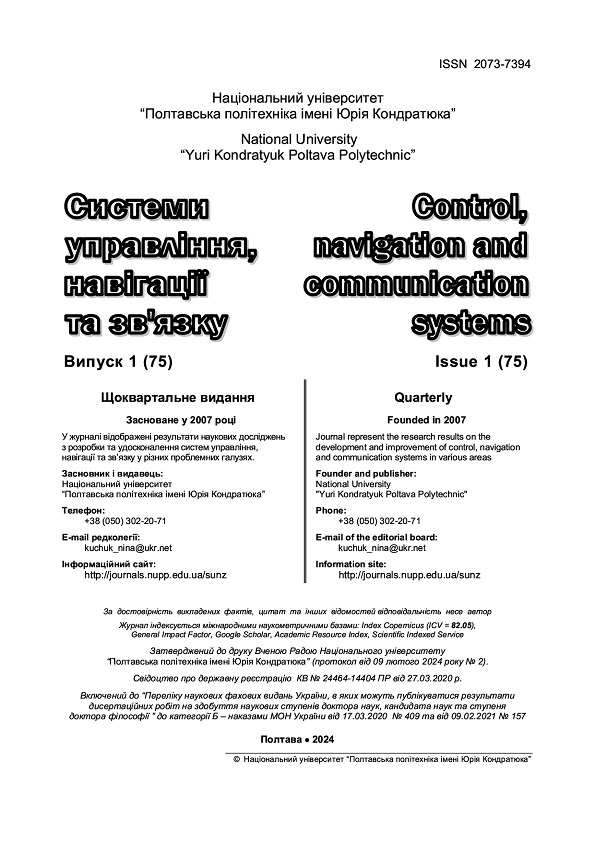ЗАСАДИ ЗНИЖЕННЯ РІВНІВ НИЗЬКОЧАСТОТНОГО ЗВУКУ ТА ІНФРАЗВУКУ У ВИРОБНИЧИХ ТА ПОБУТОВИХ УМОВАХ
DOI:
https://doi.org/10.26906/SUNZ.2024.1.170Ключові слова:
низькочастотний звук, інфразвук, резонанс, захисна панельАнотація
Показано, що традиційні звукопоглинальні матеріали неефективні для зниження рівнів низькочастотного звуку та інфразвуку. Для нормалізації цих факторів потрібне розроблення спеціальних захисних конструкцій. Тому доцільне дослідження можливості розроблення як конкретних засобів захисту працюючих та населення від впливу низькочастотного звуку та інфразвуку у конкретних умовах, так і формування загальних засад забезпечення нормативних значень цих факторів. Розроблено вимоги до захисних конструкцій. Головними з них є: застосування звукоізоляційних конструкцій не повинне змінювати основні робочі параметри пристроїв або технологічних процесів; параметри звукоізоляційних конструкцій повинні забезпечувати достатній рівень захисту людей; технології виготовлення захисних конструкцій повинні бути економічно прийнятними. Надано розрахунковий апарат щодо визначення акустичного навантаження на середовище. Показано особливості і надано розрахунки щодо визначення навантаження на середовище низькочастотного звуку та інфразвуку. Надано функції щодо розрахунку параметрів захисних панелей резонансного типу для зниження рівнів низькочастотного звуку та інфразвуку. Недоліком таких конструкцій є налаштування на одну резонансну частоту. При цьому наголошено, що усі наведені співвідношення є емпіричними. Тому реальні показники щодо резонансної частоти за обраних параметрів конструкції можуть суттєво відрізнятися. Це вимагає забезпечення певної широкосмуговості захисної конструкції. Для забезпечення прийнятного захисту в області низьких та інфразвукових частот доцільна двошарова панель. Друга панель налаштовується на резонансну частоту, відмінну від першої. Ці частоти обираються за результатами натурних вимірювань і повинні мати найбільші амплітуди у визначеному діапазони частот. Внутрішня панель робиться перфорованою. Це знижує добротність коливальної системи та робить панель більш широкосмуговою. Проміжок між панелями доцільно заповнювати шумопоглинальними матеріалами, наприклад гранульованим пінополістиролом. Це забезпечує зниження рівня шуму в усьому звуковому діапазоні. Певними недоліками пропонованих конструкцій є необхідність конструювання для конкретних умов – розмірів приміщення, площі стіни тощо.Завантаження
Посилання
McKenna M.H., McComas S.L., Danielle Whitlow R., Diaz-Alvarez H., Jordan A. M., Daniel Costley R., Simpson C. P. Remote structural infrasound: Case studies of real-time infrastructure system monitoring. Journal of Infrastructure Systems. 2021. 27(3), 04021021. https://doi.org/10.1061/ (ASCE)IS.1943-555X.0000623
Keith S.E., Daigle G.A., Stinson M. R. Wind turbine low frequency and infrasound propagation and sound pressure level calculations at dwellings. The Journal of the Acoustical Society of America. 2018. 144(2). Р. 981-996. https://doi.org/10.1121/1.5051331.
Myshchenko I., Nazarenko V., Stopa M., Maslakiewicz M. OCCUPATIONAL EXPOSURE TO INFRASONIC AND LOW FREQUENCY NOISE: ACTUAL PROBLEMS OF HYGIENIC STANDARDIZATION. Український журнал Охорона праці. 2021. 17 (4). РР. 235-244. https://doi.org/ 10.33573/ujoh2021.04.235.
Кузнецова Е.Б., Булавина И.Д. Особенности мониторинга инфразвукового загрязнения селитебных территорий, прилегающих к транспортным магістралям. Гигиена и санитария. 2018. №12. С. 1141-1145.
Гагарин С.А., Рожихин Н.С., Романов Л.И. Трамвай как источних низкочастотного звука и инфразвука. Вестник Удмуртского университета. Экологические проблемы и природопользование, т. 25, выпуск 4. 2015. С. 7-13.
Зинкин В.Н., Солдатов С.К., Богомолов А.В., Драган С.П. Актуальные проблемы защиты населения от низкочастотного шума и инфразвука. Технологии гражданской безопасности. 2015. Том 12. № 1 (43). С. 90-96.
Müller L., Kropp W., Zachos G., Forssén J. Investigating Low Frequency Sound from Traffic in a Living Room Lab. Fortschritte der Akustik, 2021. 4 р.
Sihar I. Numerical modelling of transient low-frequency sound propagation and vibration in buildings. Eindhoven: Eindhoven University of Technology. 2022. 213 p.
Nazarenko V.I., Leonov Yu.I., Glyva V.A., Burdeina N.B., Cherednichenko I.M., Pochta V.N., Holubeva A.O. The influence of UV-LED lamps radiation on indicators of microflora in university auditoriums. Ukrainian journal of occupational health. 2023. Vol. 19. № 1. P. 42-50. https://doi.org/10.33573/ujoh2023.01.042
Glyva V., Kasatkina N., Levchenko L., Tykhenko O., Nazarenko V., Burdeina N., Panova O., Bahrii M., Nikolaiev K., Biruk Y. Determining the dynamics of electromagnetic fields, air ionization, low-frequency sound and their normalization in premises for computer equipment. Eastern-European Journal of Enterprise Technologies, 2022, 3(10-117), рр. 47–55. https://doi.org/10.15587/1729-4061.2022.258939.
V. Glyva, O. Zaporozhets, L. Levchenko, N. Burdeina, V. Nazarenko. Methodological Foundations Protective Structures Development For Shielding Electromagnetic And Acoustic Fields. Strength of Materials and Theory of Structures. 2023. Issue No. 110. PP. 245-255. https://doi.org/10.32347/2410-2547.2023.110.245-255




